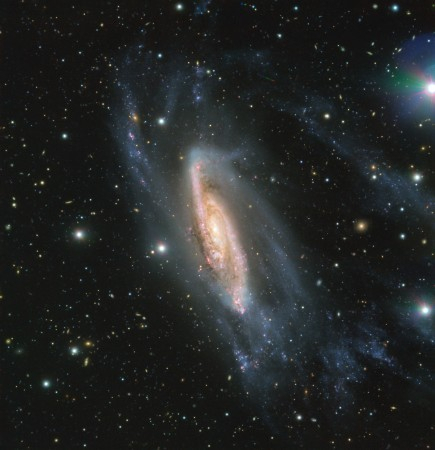
The European Southern Observatory (ESO) has just released a stunning image of the galaxy NGC 3981. Captured by the FORS2—an instrument on the Very Large Telescope (VLT), it is one of the most detailed images of the galaxy so far. It was carried out as part of the ESO Cosmic Gems Programme, says a release by the Observatory. The project makes use of the conditions are not suited for gathering scientific data.
The image shows spiral galaxy NGC 3981 "suspended in the inky blackness of space". This galaxy can be spotted in the line of the constellation of the Cup and it was imaged in May 2018, says the ESO.
Called the FOcal Reducer and low dispersion Spectrograph 2 (FORS2), it is an instrument placed on the VLT. Mounted on Unit Telescope 1 at the Paranal Observatory in Chile, it is among the most advanced imaging tools that are part of the four Unit Telescopes of the VLT.
Often called the "Swiss Army knife", the versatile FORS2 gives astronomers the ability to research a variety of celestial bodies from different points of view— along the way, it gives out visually stunning images like the one seen here. Sensitive instrumentation of the FORS2 was able to reveal the NGC 3981's spiral arms, that are home to massive streams of dust and regions that birth stars—as evidenced by the disc of hot young stars.
NGC 3981 is tilted toward Earth and this makes it possible for astronomers to gaze right into its heart and study its bright centre. It is seen as a highly energetic region and is home to a supermassive black hole. In its outlying spiral structure, the report notes that some of it appears to have been stretched out from the galaxy itself. This could have been caused by the gravitational pull of a galactic encounter that NGC 3981 might have faced in the past.
NGC 3981 lives about 65 million light years from Earth, and its part of the NGC 4038 group, notes the report. This group in itself is a part of the Crater Cloud, a small component of the Virgo Supercluster, which is home to the Milky Way as well.









